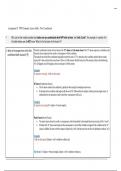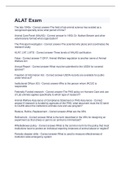Other
[NEW DOCUMENT] THE TEFL ACADEMY - ASSIGNMENT B [FIRST CONDITIONAL]
- Course
- Institution
This document contains the Tefl Academy Assignment B on the first conditional. It’s a new document, and it’s on the context of sports. The document is thoroughly written, well-researched, and well-presented, it includes all six parts. This document will help you save time and deliver the best ...
[Show more]




